How to predict people's intention to use a new technology?

When we decide to develop a new technological solution to a new context to better predict the success of it, understand people’s behaviour and comprehend their intention to use a given technology is essential. But how to do it? A study using a well known model called UTAUT was conducted to undertsand if this model would fit when augmented reality is suggested among archaeoloical sites.
This study was presented in the 14th International Joint Conference on Computer Vision, Imaging and Computer Graphics Theory and Applications (VISIGRAPP 2019), specifically, in the 3rd International Conference on Human Computer Interaction Theory and Applications (HUCAPP 2019), which took place in Prague, Czech Republic, from 25st to 27th of Febraury (VISIGRAPP 2019).

Hereinafter, an overview of the presentation made at this conferece is friefly described, considering the following points:
3 UTAUT model evaluation and analysis
1 Context
Due to technology development among the last few decades, people can now access technology almost everywhere.

If someone decides to go and visit an archaeological site, they’re expecting to see some ruins, right? Some rocks (or maybe a lot of them!), old structures, some old fancy decorations… And if they find the possibility of having new technologies there, will they be happy to find technology there?
This was the main question that triggered this decision of making an acceptance study. I’ve been working with augmented reality since 2016, trying to turn it available for cultural heritage sites and I realised that, maybe because I’m a computer engineer, I don’t truly understand people’s intention to use technology, how do they feel about it? Let’s face it, in 2017 I tested an AR prototype in Conimbriga’s ruins, I was there asking them to try a technological solution, and they accept my invitation. But what if I was not there to ask? Would they use it?
So, before going into the field with new and inovative technological solutions, it is needed to better understand the behavioural intention to use a given technology, in this particular case, augmented reality in archaeological sites.
Acceptance Model Selection
Accordingly to this need, a vast diversity of models and theories have been proposed by researchers who have been improving, combining them, and formulating new models and theories, in order to find better solutions for each area of work.
Considering the acceptance of technology in cultural heritage contexts, let’s look at the most common models and theories found in literature:

The theory of Reasoned Action was largely used among the years to predict behavioural intentions, seen as an inspiration to elaborate new models and theories related to acceptance and intention to use.

Building on this theory, one of the most fundamental and influential theories of human behaviour was created: TAM.

The Technology Acceptance Model, known as TAM, describes the motivational process mediating system characteristics and user behaviour, and relating individual choices when adopting, or not, a technology when performing a task.
For this analysis, measures related to characteristics of the system and capabilities are made in order to relate it with users’ motivation to use the system.
A theoretical extension of TAM was presented as TAM 2:

TAM 3 come out from the combination of TAM 2 with the model of the determinants of perceive of use, creating new relationships:
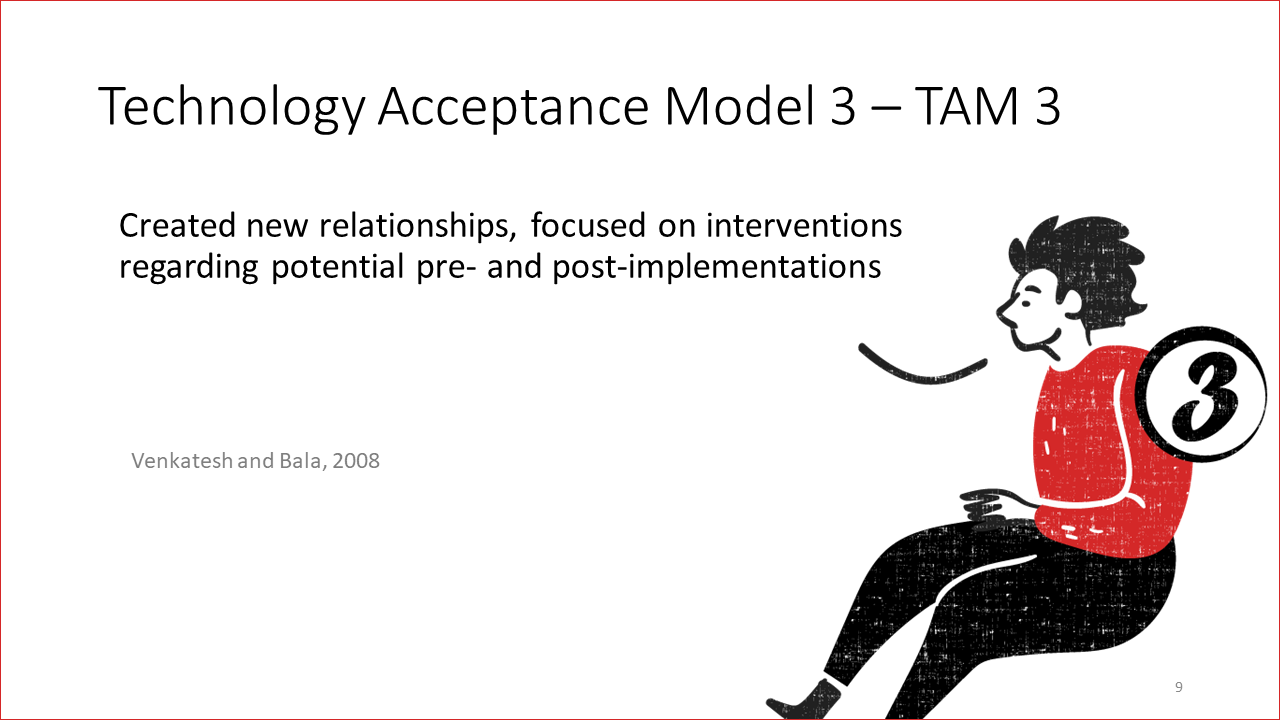
Despite the large number of studies conducted aiming to understand factors that contribute to successful implementations of technology, DeLone and McLean looked at information system success as unachievable.
Thus they proposed the DeLone and McLean (D&M) Information Systems Success Model:

This model was updated in 2003 attempting to capture the multidimensional and interdependent nature of IS success. Service Quality was added and stated as an important dimension of IS success given the importance of IS support.
Consistent with DeLone and McLean proposal in 1992, a model called the Technology-to-Performance Chain appeared. This approach stresses the linkage between constructs, reflecting the impact of information technology on performance.
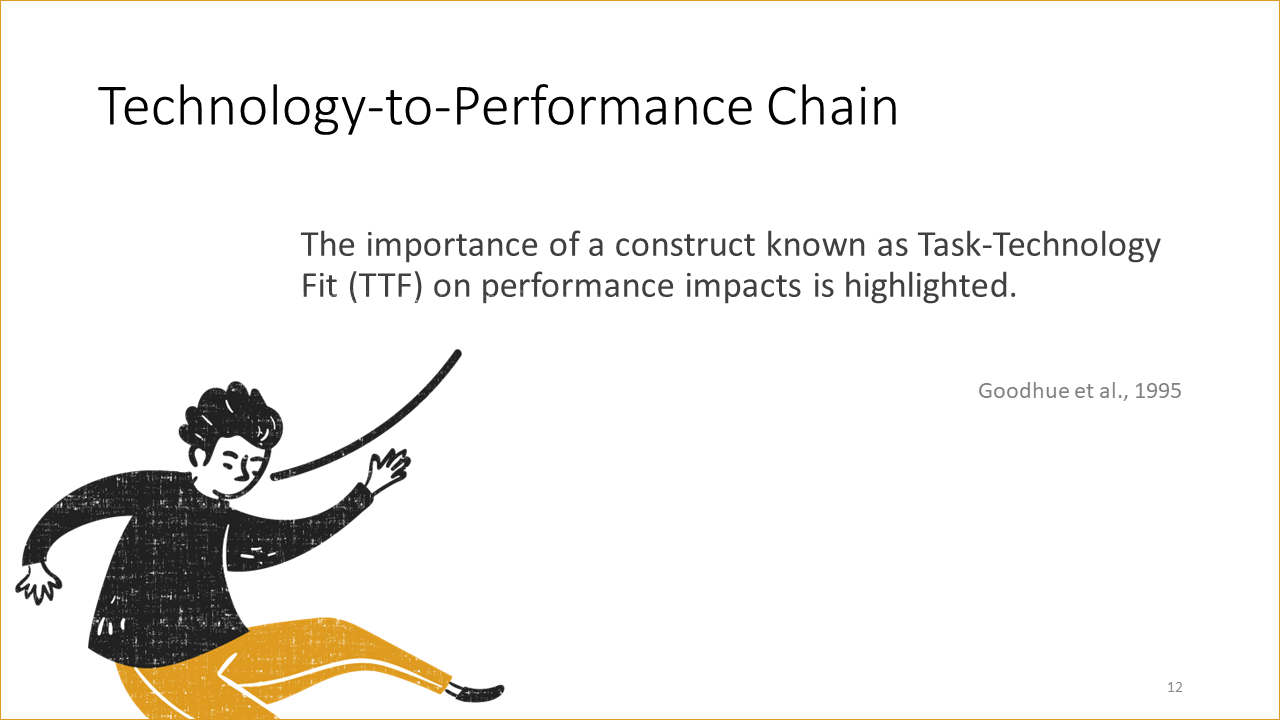
Models which include the Task-Technology Fit construct explicitly include task characteristics, as the examples proposed in the Technology-to-Performance Chained, implying the matching of capabilities of the technology with the demands of the task.
Combining several previous models and theories, a model proposal unified eight theories and models of individual acceptance:
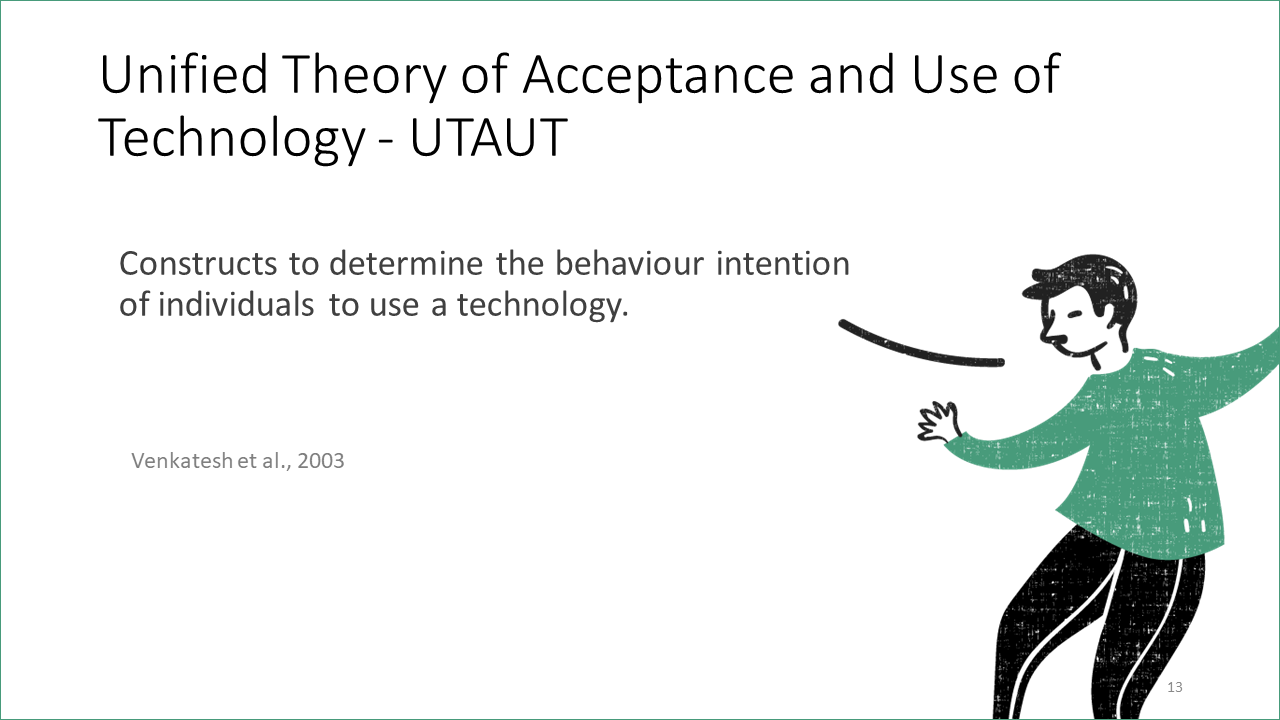
The constructs presented in this model proposal are Performance expectancy, Effort expectancy, Social influence, and Facilitating conditions. A new version was presented as UTAUT2, where three new constructs were added:
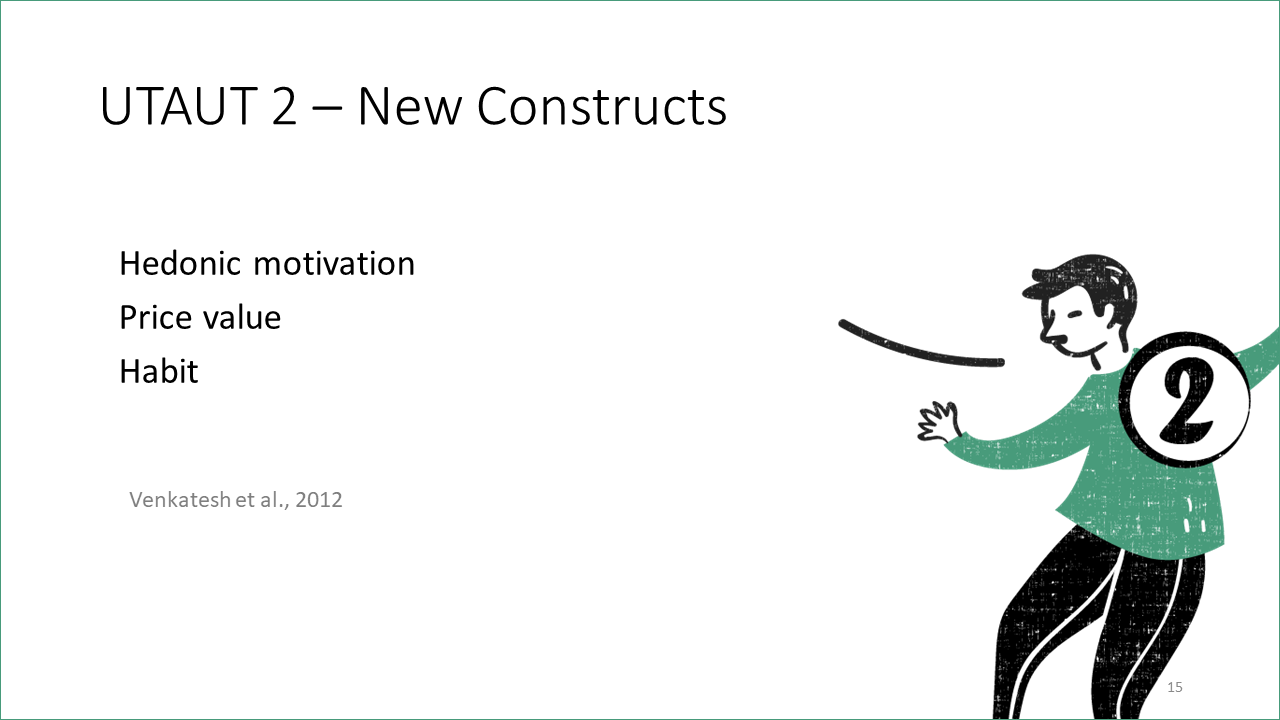
These constructs were associated with individual differences – age, gender, voluntariness, and experience – as moderators on behavioural intention to use a technology.
3 UTAUT model evaluation and analysis
Going back to the requirements of the current study to seek a prediction of behaviours, where participants have no access to experience a prototype, the UTAUT model and its constructs related with expected behaviours, seemed to better fit this study needs.
The new constructs proposed for UTAUT2 appeared to be misplaced because the current case study is not focused in commerce.
A questionnaire (online) was created, with several items to analyze each variable.

The variables evaluated in the current study are:

According to UTAUT model, the independt variables are:
- Performance Expectancy as the degree to which a person believes that using the system will help each individual to obtain gains related to something.
- Effort Expectancy is the degree of ease associated with the use of the system.
- Social Influence the degree to which a person perceives that important others believe each individual should use the new system.
- Facilitating Conditions is the degree to which an individual believes that an organizational and technical infrastructure exists to support the use of the system.
The dependent variable, Behavioural Intention, is considered as having a significant positive influence on technology usage.
Regarding to moderators, some changes were made:
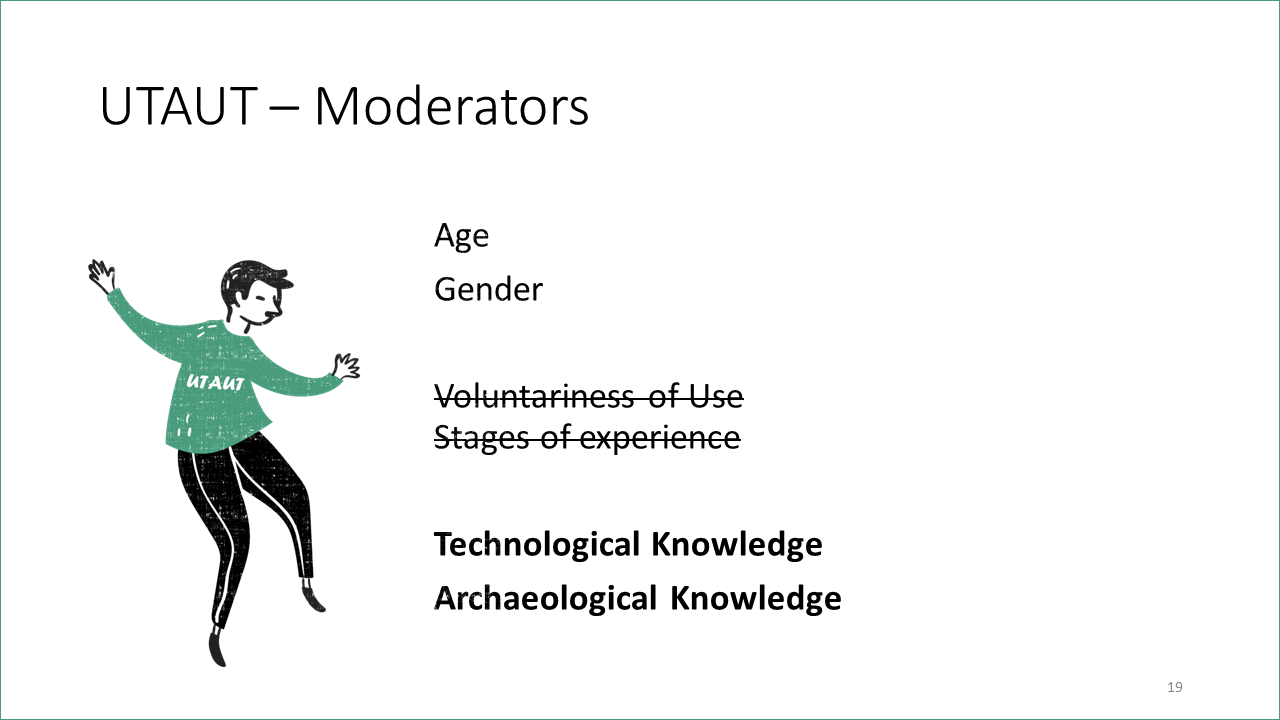
4 Hypothesis and Results
Regarding to the initial hypothesis, no significant correlations were found regarding to some moderators.

The given results revealed that the influence of performance expectancy on behavioural intention (BI) is not moderated by gender neither by age, but is moderated by archaeological knowledge and technological knowledge, such that the effect is stronger for higher archaeological connoisseurs, and for higher technology connoisseurs.

The influence of effort expectancy on BI is not moderated by age, but is moderated by gender and by technological knowledge: weaker for male, and for higher technology connoisseurs.

The influence of social influence on BI is not moderated by age, but is moderated by gender and by technological knowledge: stronger for man with lower levels of technological knowledge.

The influence of facitating conditions on BI is not moderated by age, but is moderated by gender and by technological knowledge: stronger for man with high levels of technological knowledge.
Accordingly to the results of this questionnaire, no significant correlations were found regarding to age neither to gender and BI items. However, archaeological and technology knowledge are moderators found to have significant positive correlations with all BI items.
5 Conclusions and Future Work
UTAUT model is a suitable model for understanding the behavioural intention to use AR, but the results call our attention to the importance of holding continuous acceptance studies to keep up-to-date new technologies understandings.
Collected data demonstrated that, for the use of Augmented Reality (AR) in archaeological sites, age does not play a role as moderator to any construct analysed. Gender also missed some relevance in some constructs, such as performance expectancy and behavioural intention.
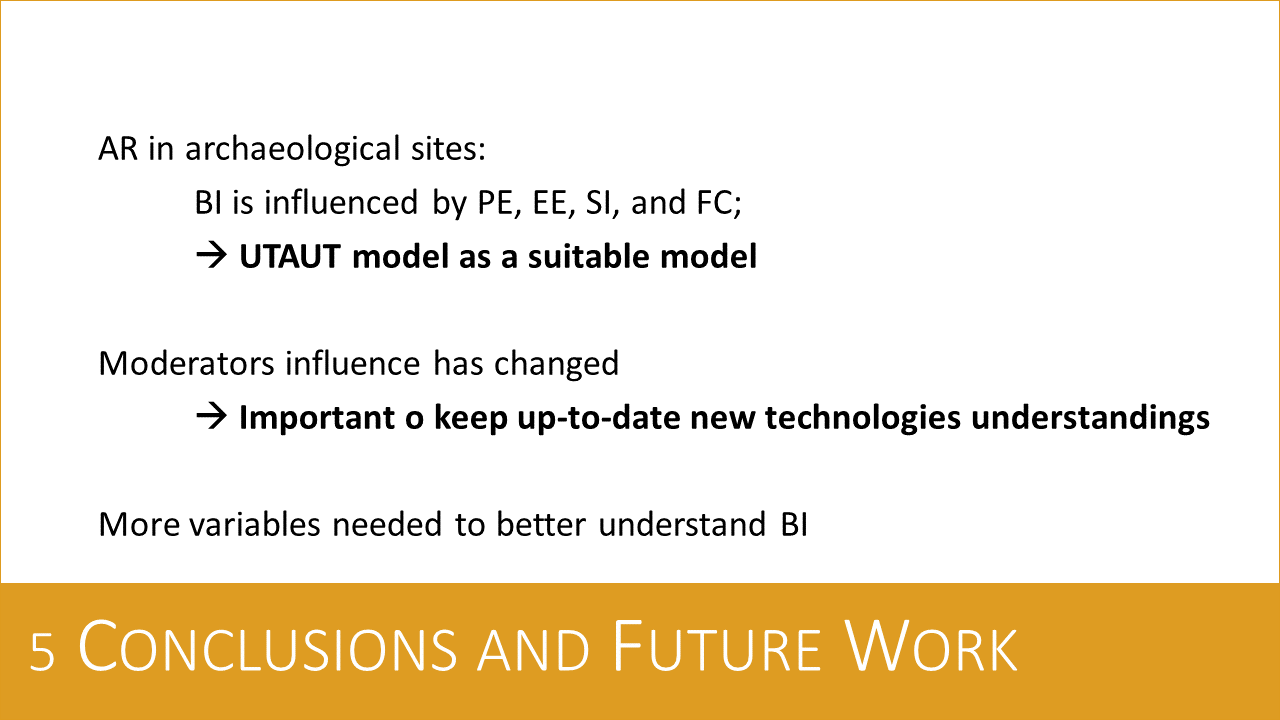
This proposed model should be supplemented with more variables in order to better understand the acceptance and intention to use a new technology. For this reason, an update to the presented UTAUT model is currently being developed.

This article was written based on the presentation made, referring to the following paper:
Marto, A., Gonçalves, A., Martins, J, and Bessa, M., “Applying UTAUT Model for an Acceptance Study Alluding the Use of Augmented Reality in Archaeological Sites”, 14th International Joint Conference on Computer Vision, Imaging and Computer Graphics Theory and Applications (VISIGRAP 2019), vol. 2, pp. 111-120, Prague (Czech Republic), 2019.
 SensiMAR
SensiMAR